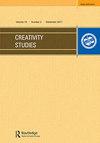UPCYCLING FOR REPURPOSING WASTE INTO CREATIVE PRODUCTS
Q1 Social Sciences
引用次数: 0
Abstract
Upcycling is the process of repurposing non-used materials or products to make them more valuable or usable, with increased quality and value. However, truly little research has been conducted on the design process and/or creative ideation of upcycling in order to produce higher-quality and more valuable products. This study presents the four stages of the design process, consisting of selecting the waste products, emerging conceptions, generating ideas, and rendering a series of creative ideas. SCAMPER (substitute, combine, adjust, modify, put to other uses, eliminate, reverse), one of the practical and effective techniques to create various creative ideas, was applied in the stages of emerging conceptions and generating ideas. With the upcycling concept of waste product design utilizing SCAMPER, the results demonstrated that waste soft drink cans could be converted into five creative products: a desk watch, a picture frame, a spring paper clip, a pencil holder, and a lamp. The five products featured the upcycling of waste soft drink cans, removing the need to recycle or send them to landfills at that point in their lifecycle. Consideration was given to the design process’ compatibility with creative concept generation and design. The study indicated that upcycling should be viewed as an essential component of waste management and repurposing in order to provide an intelligent answer to escalating product waste problems.将废物再利用为创意产品的升级再造法
升级再造是指对未使用的材料或产品进行再利用,使其更具价值或可用性,并提高质量和价值的过程。然而,为了生产出更高质量和更有价值的产品,对升级再造的设计过程和/或创意构思的研究确实很少。本研究介绍了设计过程的四个阶段,包括选择废品、形成概念、产生想法和呈现一系列创意。SCAMPER(替代、组合、调整、修改、改作他用、消除、逆向)是创造各种创意的实用有效技术之一,被应用于构思和产生创意的阶段。结果表明,利用 SCAMPER 的废物产品设计升级再造概念,可以将废弃的软饮料罐改造成五种创意产品:台式手表、相框、弹簧回形针、笔筒和台灯。这五种产品的特点是对废弃软饮料罐进行升级再造,使其在生命周期中不再需要回收或送往垃圾填埋场。研究考虑了设计过程与创意概念生成和设计的兼容性。研究表明,应将升级再造视为废物管理和再利用的重要组成部分,以便为不断升级的产品废物问题提供一个明智的解决方案。
本文章由计算机程序翻译,如有差异,请以英文原文为准。
求助全文
约1分钟内获得全文
求助全文
来源期刊

Creativity Studies
Social Sciences-Cultural Studies
CiteScore
3.20
自引率
0.00%
发文量
38
审稿时长
15 weeks
期刊介绍:
Creativity Studies accepts original research articles with a focus on communication within the creative society. The journal welcomes contributions from scholars from diverse disciplines such as philosophy, sociology, history, political, communication and information sciences. Creativity Studies also publishes survey papers and descriptions of academic events in this area. The journal issues will be organized around different issues on creativity.
 求助内容:
求助内容: 应助结果提醒方式:
应助结果提醒方式:


